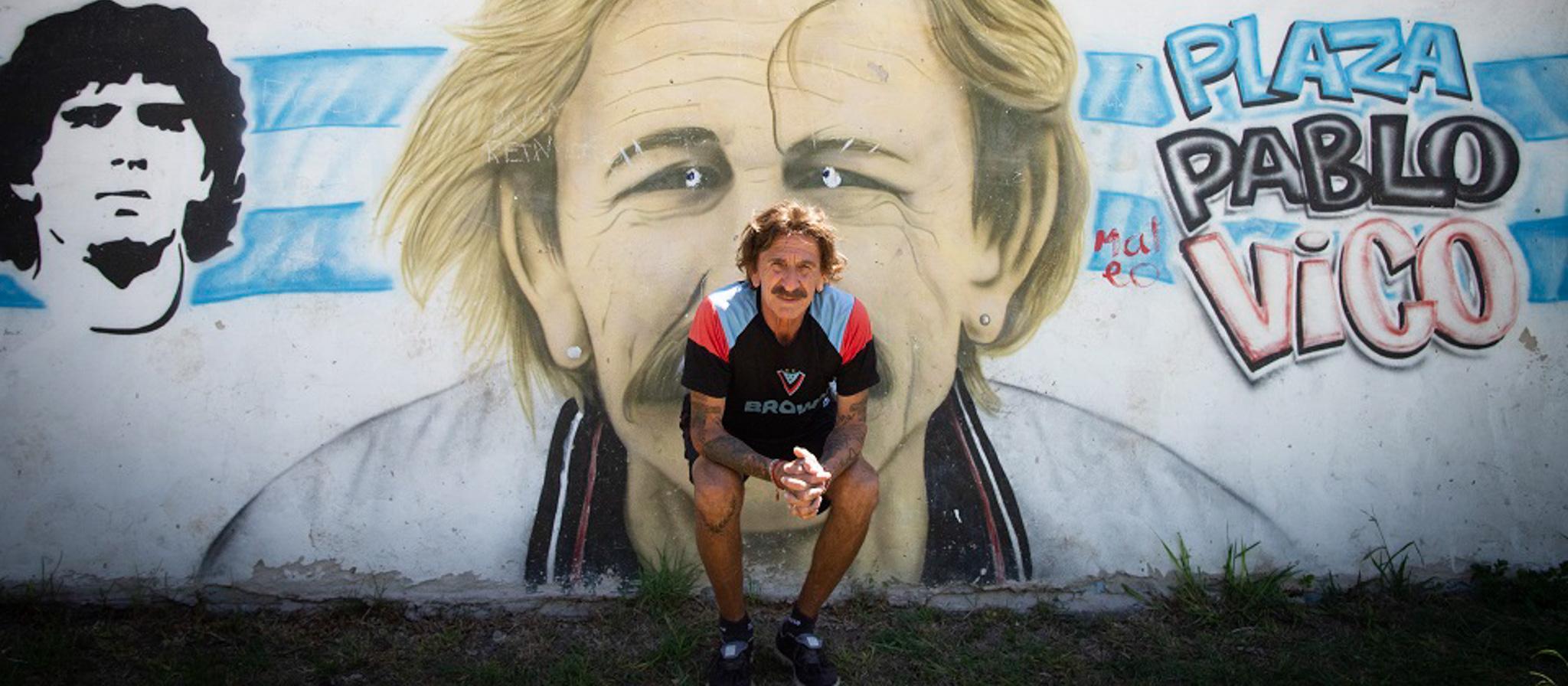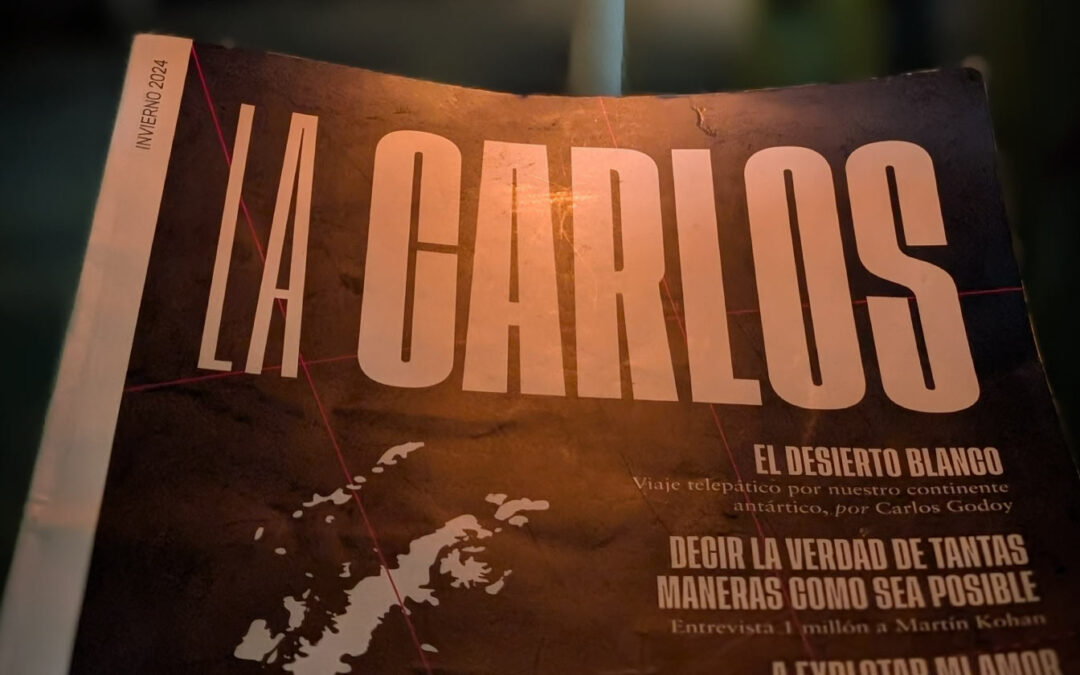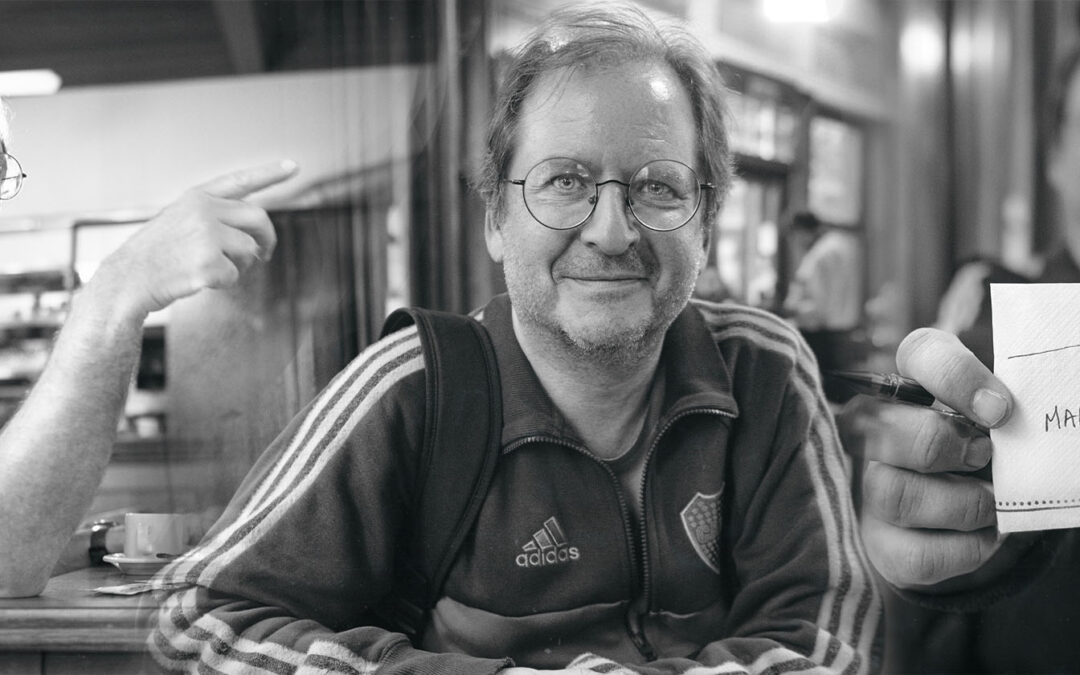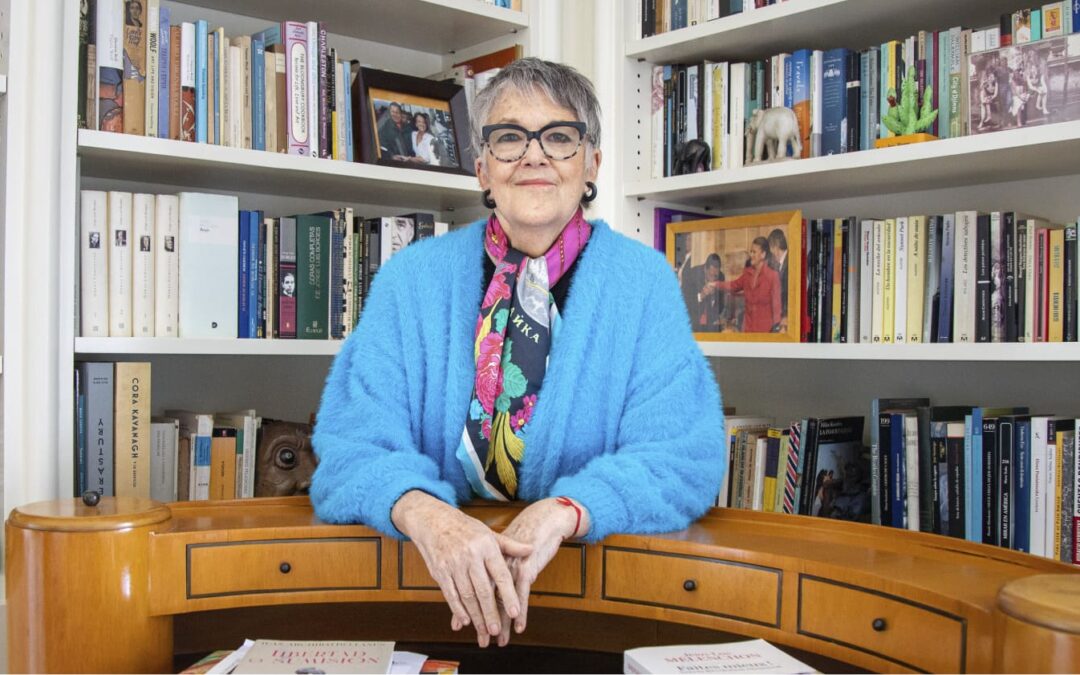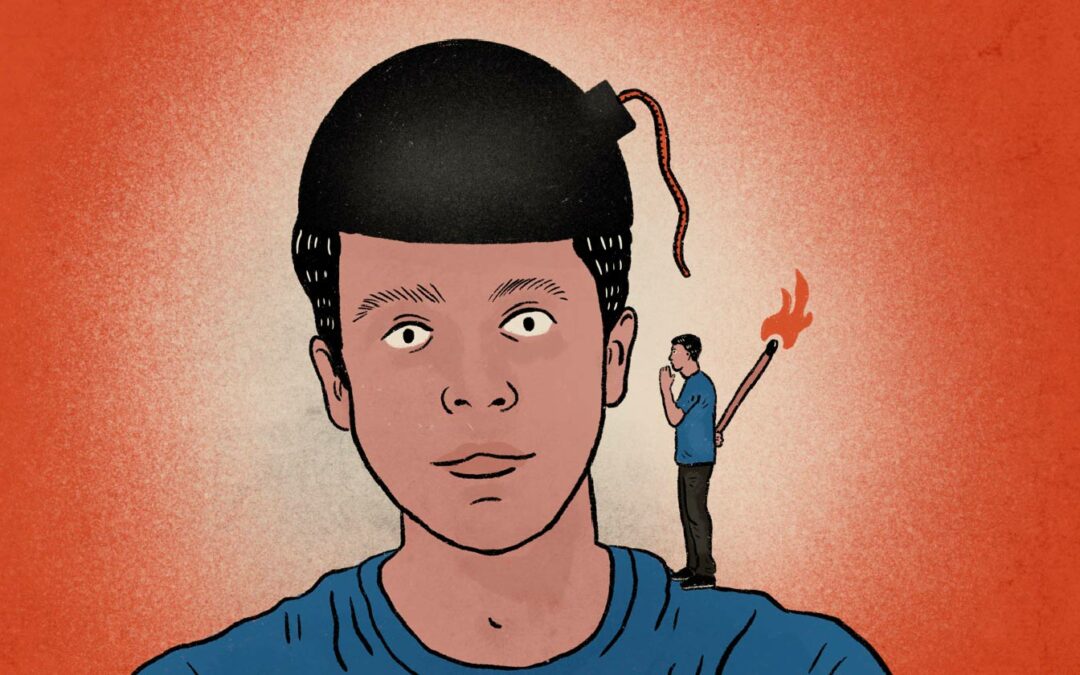Time lines in football are confusing. Arbitrary too. You choose to stick your index finger in a moment that once marked you and say “from here football was no longer the same for me”. That kind of B.C – A.D. is the same feeling experienced by barrios and humble clubs which, just as people, get their grades branded for life.
The mural of Ernesto “El Mono”[Monkey] Mena in Tristán Suárez, Ezeiza district, not only served to cover the “Duhalde 1999” slogan or the firsts limewash with the surname “Granados”, but also tells barrio La Porteña neighbours that for the Lechero [The Milkman, as the club is known] there will be no other goalkeeper like him. That corner, the same one his children currently kick, is the stain on the wall that officially signs that any goalkeeper who wears the blue and white will be measured with the Monkey’s rod under the three posts.
In another example, whoever dares to make history in the Adrogué’s Tricolor, must first have some mates in Pablo Vico Square in Rafael Calzada, then google Juanchón García’s dying goal and finally go to the gallery behind the Lorenzo Arandilla stadium to seek the blessing of the coach who is the protagonist in each paragraph of Brown’s New Testament.
Transcend from the social? On the ascenso? Well, yes. But only after El Loco Dubois. The same who faced the sponsors who wouldn’t want to pay and that reached Mendoza City walls through the brush of a «football from before» and Independiente Rivadavia [La Lepra] fan.
Countless are the stories and, luckily, the walls which daily remind us of these idols. The mystique of fútbol de abajo and the barrio’s art lives in each brick painted by the mini civilizations of fans who fill their chests telling anecdotes about their closest deities. Those with whom, many times, they shared a space, a beer or a word after the game.
Ernesto “Mono” Mena from post to post
For he keeps the heart of Ezeiza. He save the goal of a Tristán Suárez which in the 80s was still a no-hoper and, despite his 5.4 inches height, is the mirror for anyone who puts on gloves in the boxes of October 20th Stadium.
Part of his life was spent in barrio La Porteña and today he continues in the district. There, two blocks from Provincial Route 205, the “Legendary of Tristán” fans paid tribute to him. : «I never saw a goalkeeper save as much as Tristán Suárez’s shorty against Lanús», is the classic phrase El Mono’s sons always hear.
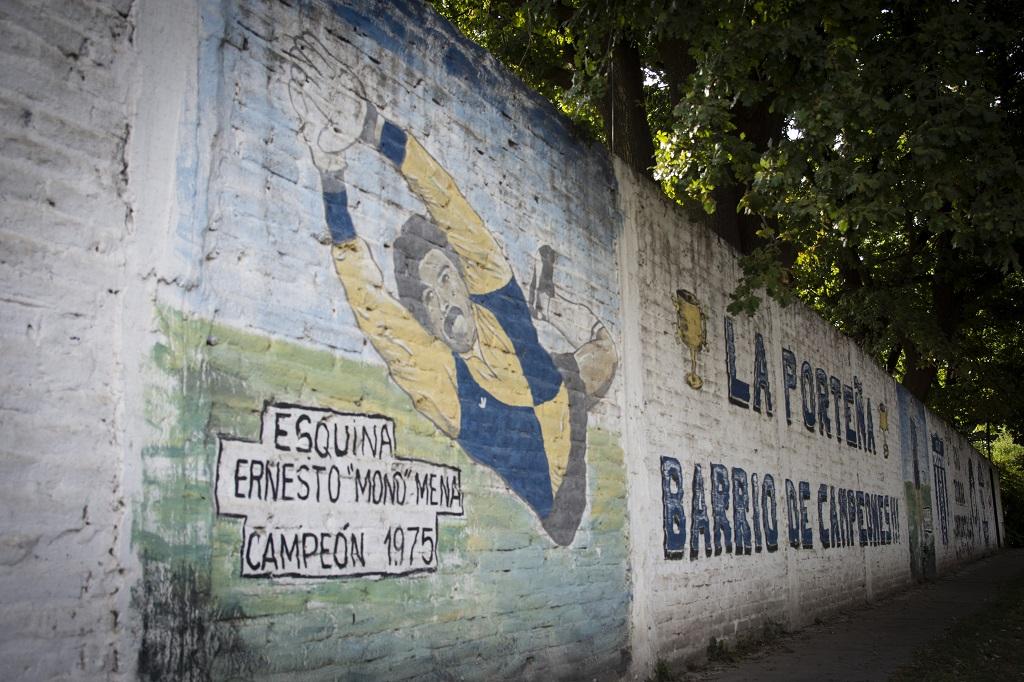
Foto: Nehuen Rovediello
Gonzalo, his son, is linked to the institution as a fan and part of Tristán Suárez games broadcasts. On December 8, two years ago, he promoted the idea of painting on the walls of La Porteña. Why? Because it is the only neighborhood in Ezeiza with two champions, Ernesto Mena, his old man, and Oscar López, his uncle and member of the ’75 team who won the promotion.
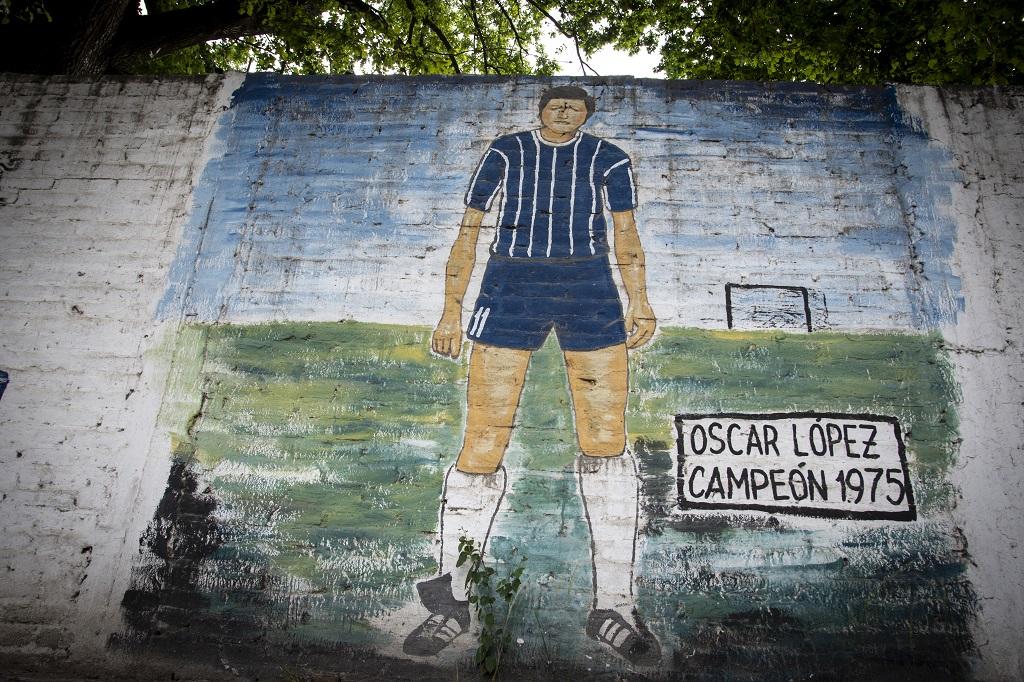
Foto: Nehuen Rovediello
Accompanied by “Los Pibes del Pincel” group they carried out the crew’s 20th graffiti. “Ernesto Mena has three facets, he is the idol of the people and the club, he is my old man and he is also a grandfather. In these three facets I cannot complain about any. When I walk down that street, I feel something beautiful, it’s pure pride”, he tells Tierra Roja.
Every day that he walks that corner or that he steps on October 20 and meets the longest-lived fans, he knows —or they let him know—that this short guy «is a legend.»
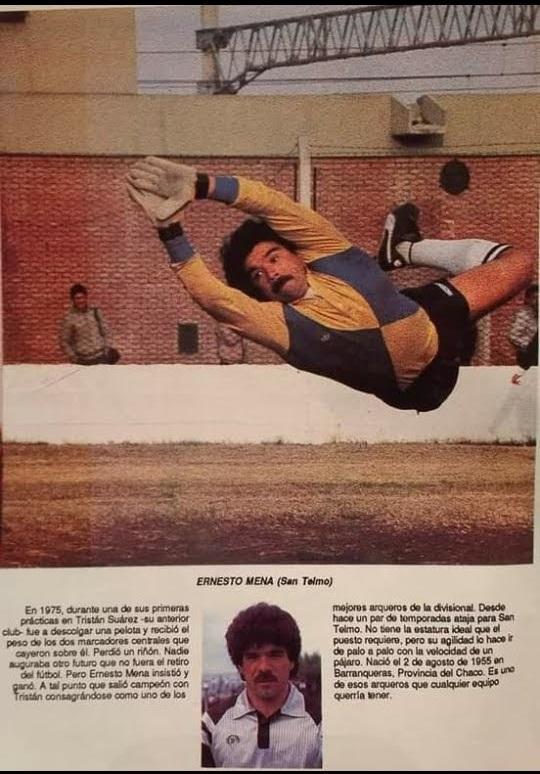
A short tail. The photo which originated the mural, the clearest one, portrays him defending the colors of San Telmo, el Candombero. He wasn’t wearing the Blue and White. But it was the clearest, hey. It was OK for the pibes. For us too.
«Dubois was a romantic character because of his ideas»
The metalhead Darío Dobuis drew attention for going out to the pitch with his face painted, like his black metal heroes. His fights against injustices in football also left a mark. “Painting your face, being a metalhead, hanging out with transgender people. He was a guy who was very much in line with what he thought”, says from Mendoza province, Marcos Paradizo, artist of ‘Fútbol Mostro’ and author of the mural this ascenso emblem has in Godoy Cruz.
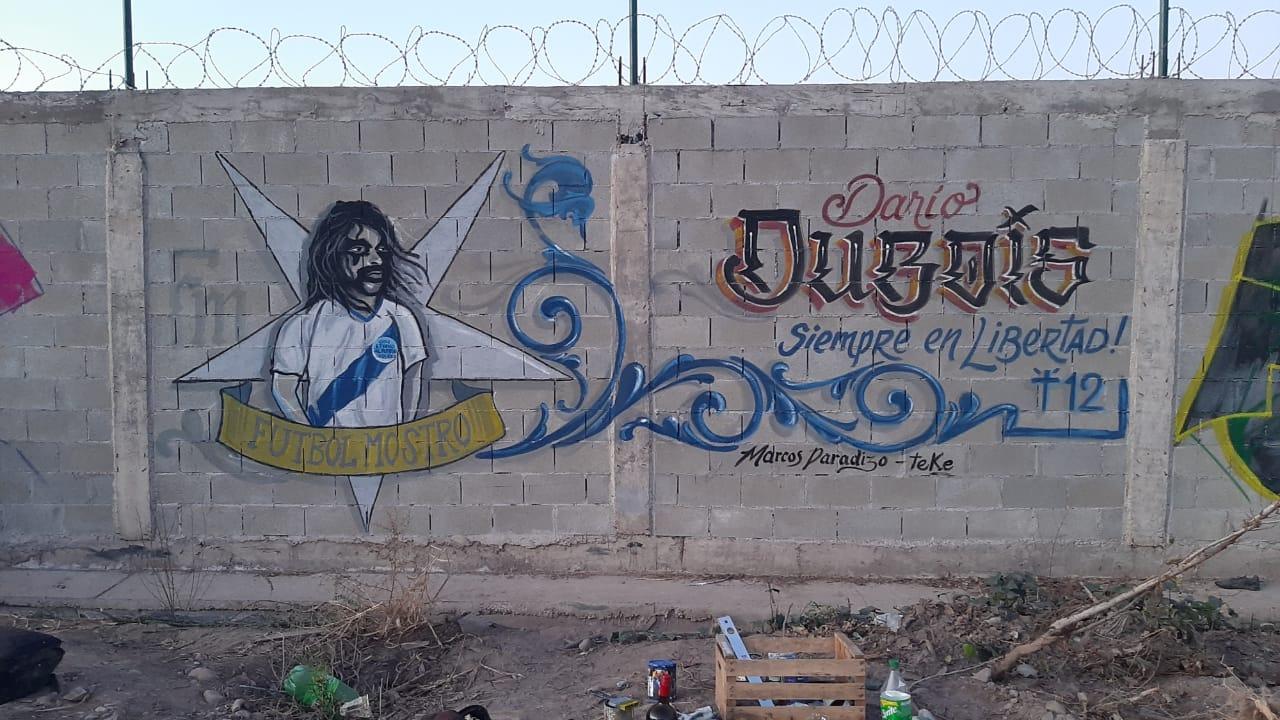
El Loco [Crazy] Dubois’s graffiti is at a tram stop, on a wall. Referent for the lower class and for Midland (he also played for Yupanqui, Laferrere, Riestra, Lugano, Cañuelas and Deportivo Paraguayo, among others), Darío died in 2008, at the age of 37, after a robbery at the exit of the venue where he worked as a sound engineer. Dubois crossed the borders of Buenos Aires and arrived in Mendoza in the brush of a fan of La Lepra who likes “football from before”.
“We had been willing to paint this for a while. Dubois was a romantic character from his ideas, we always liked that, ”he says.
Dubois represents those players «who do not appear on Internet» and was part of a generation of protagonists who gathered their own followers no matter the jersey they wore. He was followed by a kind of fan fest where hinchas drank “La Diosa” beer and did not wear fanny packs. Revolutionary, this defender, despite his position on the pitch, was from Diego’s school, from Garrafa school. You get me.
“What we like about the players de antes is that sometimes you went to the field and you didn’t care what teams they were from, you just enjoyed their mischief. In addition, it has the seasoning that after the game, the shower, the next day they would go to work”, says Paradizo.
Dubois represents those players «who do not appear on Internet» and was part of a generation of protagonists who gathered their own followers no matter the jersey they wore. He was followed by a kind of fan fest where hinchas drank “La Diosa” beer and did not wear fanny packs. Revolutionary, this defender, despite his position on the pitch, was from Diego’s school, from Garrafa school. You get me.
“What we like about the players de antes is that sometimes you went to the field and you didn’t care what teams they were from, you just enjoyed their mischief. In addition, it has the seasoning that after the game, the shower, the next day they would go to work”, says Paradizo.
Pablo Vico: History and identification
When Pablo Vico surpassed 4,972 uninterrupted days as Brown de Adrogué’s coach, he became a record man in Argentine football. He arrived at the Tricolor bench on March 21, 2009 and in 2022 he took first place as the DT who lasted the longest in office since Victorio Spinetto, Vélez’s historic coach.
Promotions, consolidating Brown in Nacional B, being a man of the House, make Vico stand out above the rest. But what truly earned him the respect of his own and others, was his story. El Bigotón [The Big Moustache], with a past in professional football and a self-confessed fan of Huracán, has his first job taking care of the club’s facilities, then he collaborated in the juvenile divisions, until his turn came in First Division and there he continues. Steady. Thinking about the squad for this season.
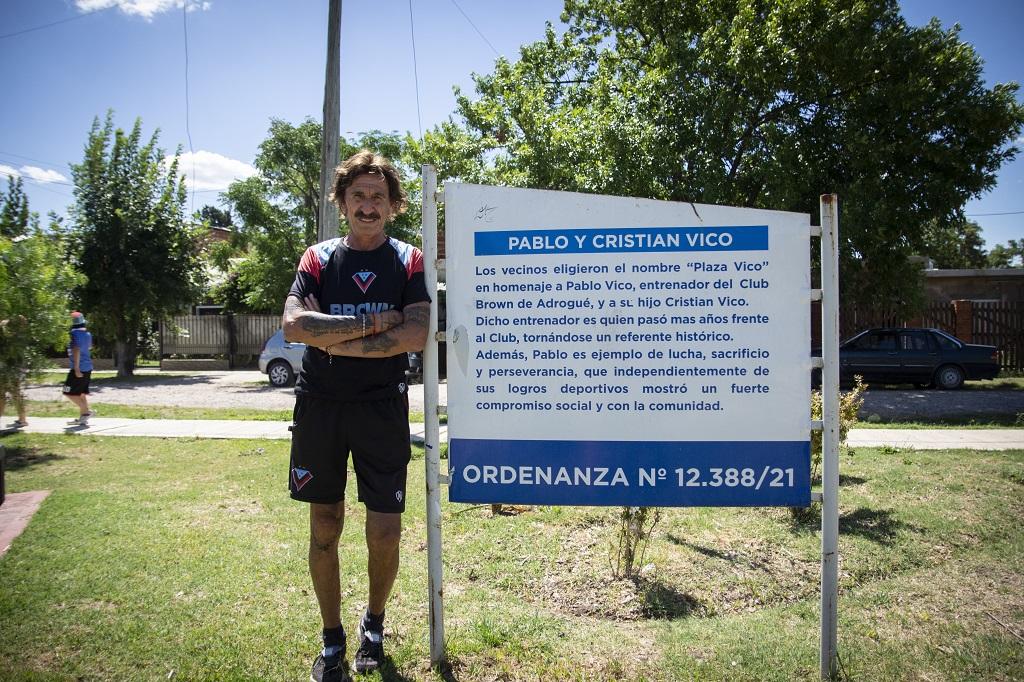
Foto: Nehuen Rovediello
A home office pioneer: Vico lives in the Lorenzo Arandilla stadium and we are not metaphorizing his extreme dedication. He spends his days, literally, in the stadium. He has neighbors only on weekends, when the players come and go from the locker rooms next to his wall. During the pandemic, he was isolated in his workplace, walking the corridor that leads to the green lawn over and over again. Suuch is the humbleness of the DT who came to direct Tricolor’s “baby division” and for more than a decade has been giving post-match press conferences in his house gallery.
All these particularities led the record man to win barrios’ affection. And they, how could it be otherwise, portrayed him over and over again. Even Almirante Brown district’s Town Hall name a square in Rafael Calzada after him.
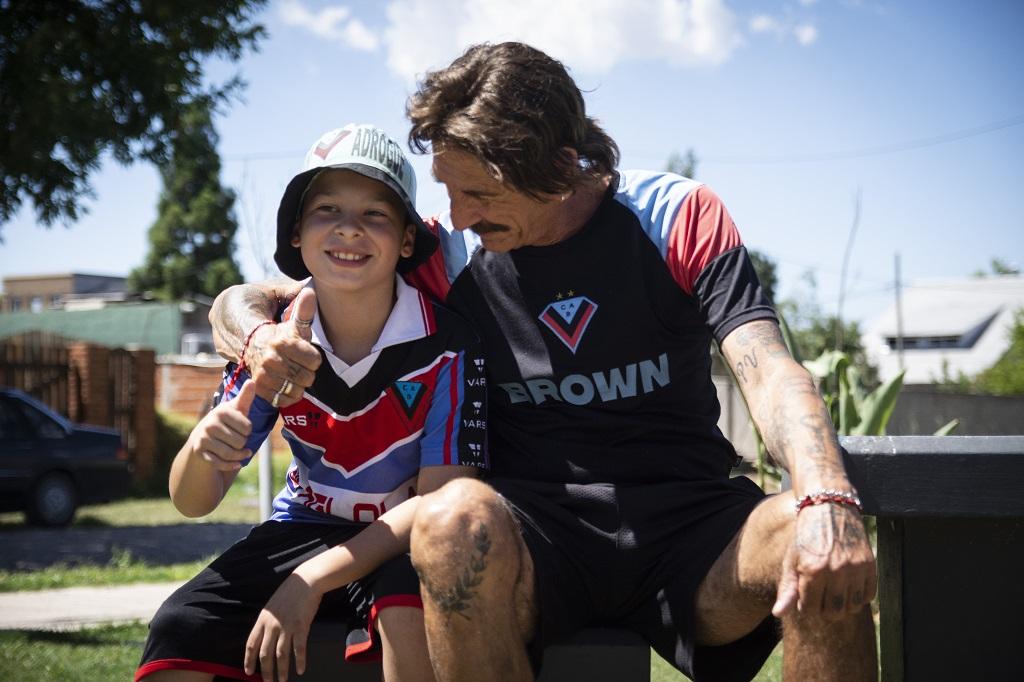
The Ax that sent River to relegation
César Mansanelli is, like so many others, one of «those who arrived» from a small town like Malvinas Argentinas, 14 kilometers away from Córdoba City. Also, like so many others, he was honored for his career and immortalized in his land as an idol and permanent reference. At least until the wall that bears his name and an iconic goal celebration is washed.
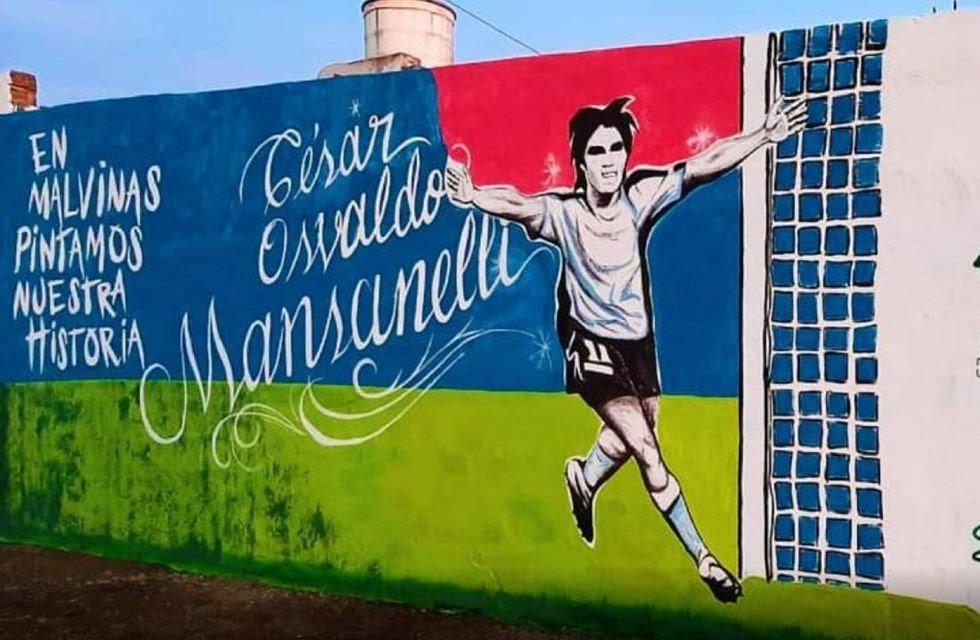
«In Malvinas we paint our stories», was the motto when they gave the mural to ‘Hacha’ Mansanelli. There, he will wear the Belgrano shirt forever. The same jersey in which, in 2012, he scored against River to condemn its historic relegation and celebrate the return of Celeste, as The Piratas Cordobeses are known, to Argentina’s most important division.
The mystical extra of this central midfielder, apart from being a reflection of the barrio deities of Argentine provinces, is that he keeps his boots on at present day. The veteran midfielder, during 2022, played the Riotercerense Regional Football League championship with the Juventud Agrario de Corralito club. That’s a Corralito Cavallo never knew. Thank God.

Lomense by adoption
The land of actor Martín Bossi, Lomas de Zamora, is full of artists. Some work for the mainstream media and others paint a mural to thank their popular idols, a goal in a First Division promotion.
Fabio Pieters played for Talleres de Córdoba, Estudiantes de La Plata and Gimnasia de Jujuy, but nowhere will love him as much as in Lomas de Zamora. The midfielder, already retired, did not help an old man cross the street, nor did he municipalize the Llavallol hospital, it was only enough for him to open his boot to score the key goal in the final against Quilmes and give El Milrayitas the promotion. Thus he became the hero of the “2000 generation”, maybe the most famous Lomas team ever.
«Dominating the ball at full speed, follow Pieters, Pieters passed, here goes Pieters…», recounted Walter Nelson. The rest is history.
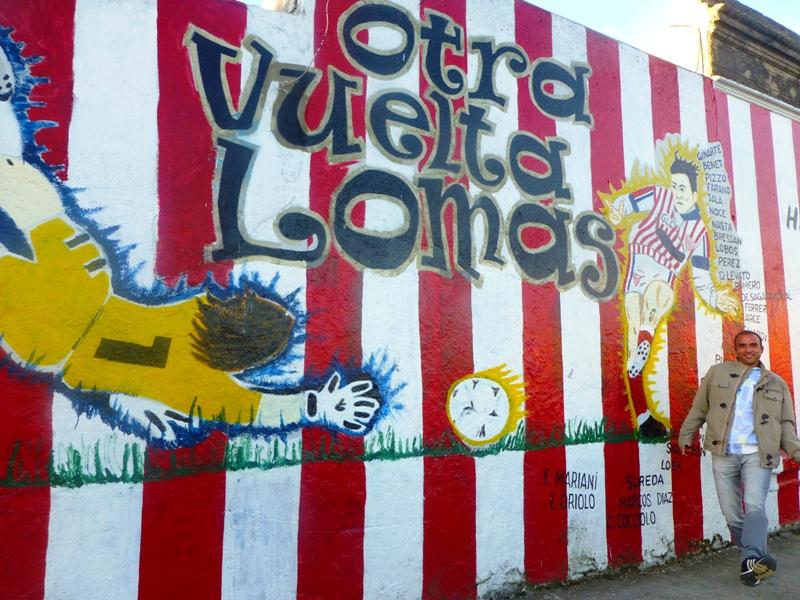
From that day until this moment the Ganando las calles group have carried the Milrayitas inks throughout the district. They chose Pereyra Lucena and Santa Fe corner, a few blocks from Eduardo Gallardón, to eternally print the signature of Pieters’ goal before the useless reaction of the Cervecero (Beearman, as Quilmes is known) goalkeeper.
The murals are just one of the representations of love for football idols and barrio icons. Yes, perhaps one of the most beautiful. For this reason, the stories previously narrated are not enough to summarize what Argentina and its potrero gave to the sport. Nor what every corner of this rich world champion country has to tell.
That is why at Tierra Roja we invite you to join the move. Send us the photo of your barrio mural! To show the pride of your town, city or province. To share the paintings that makes us proud forever.

